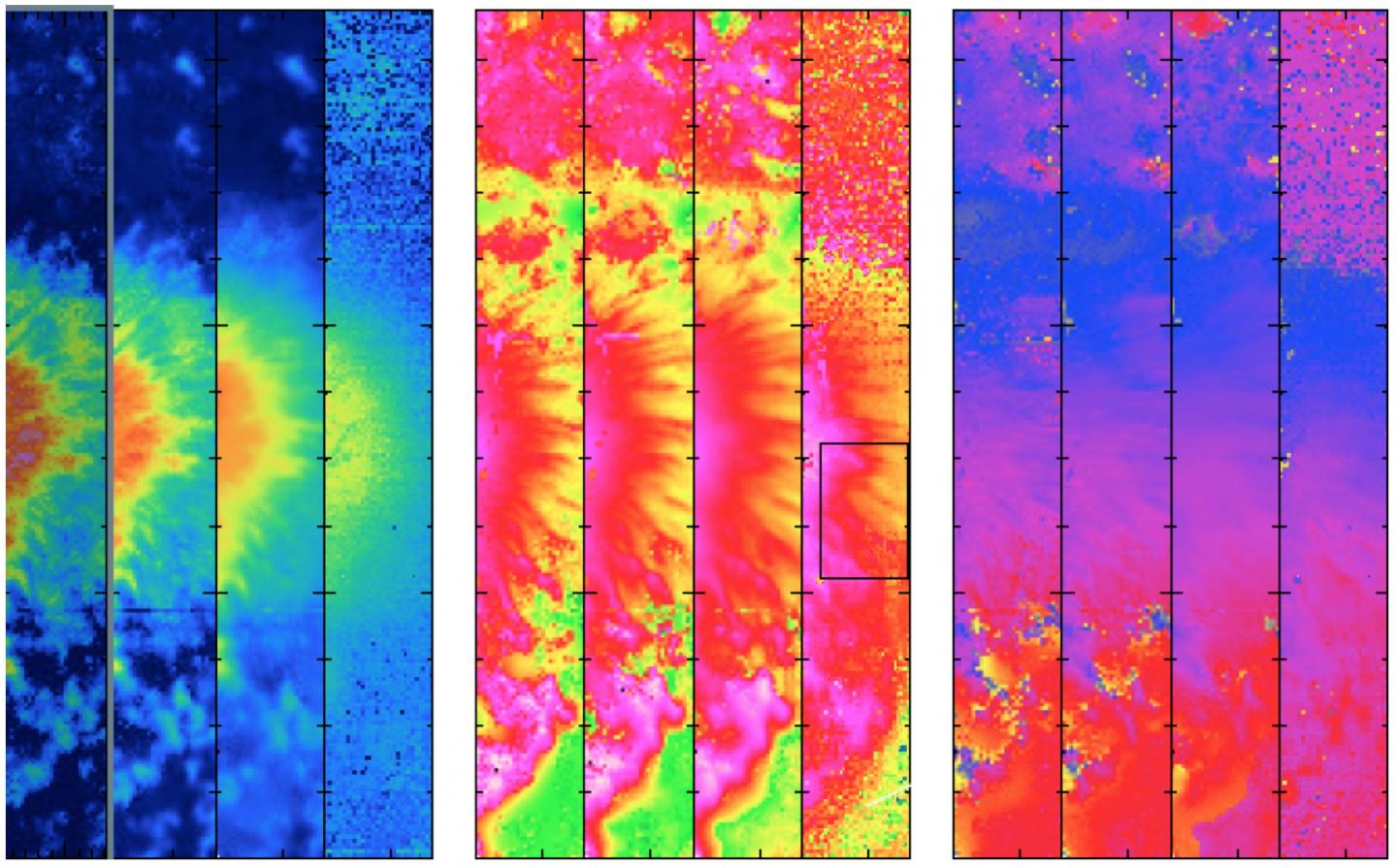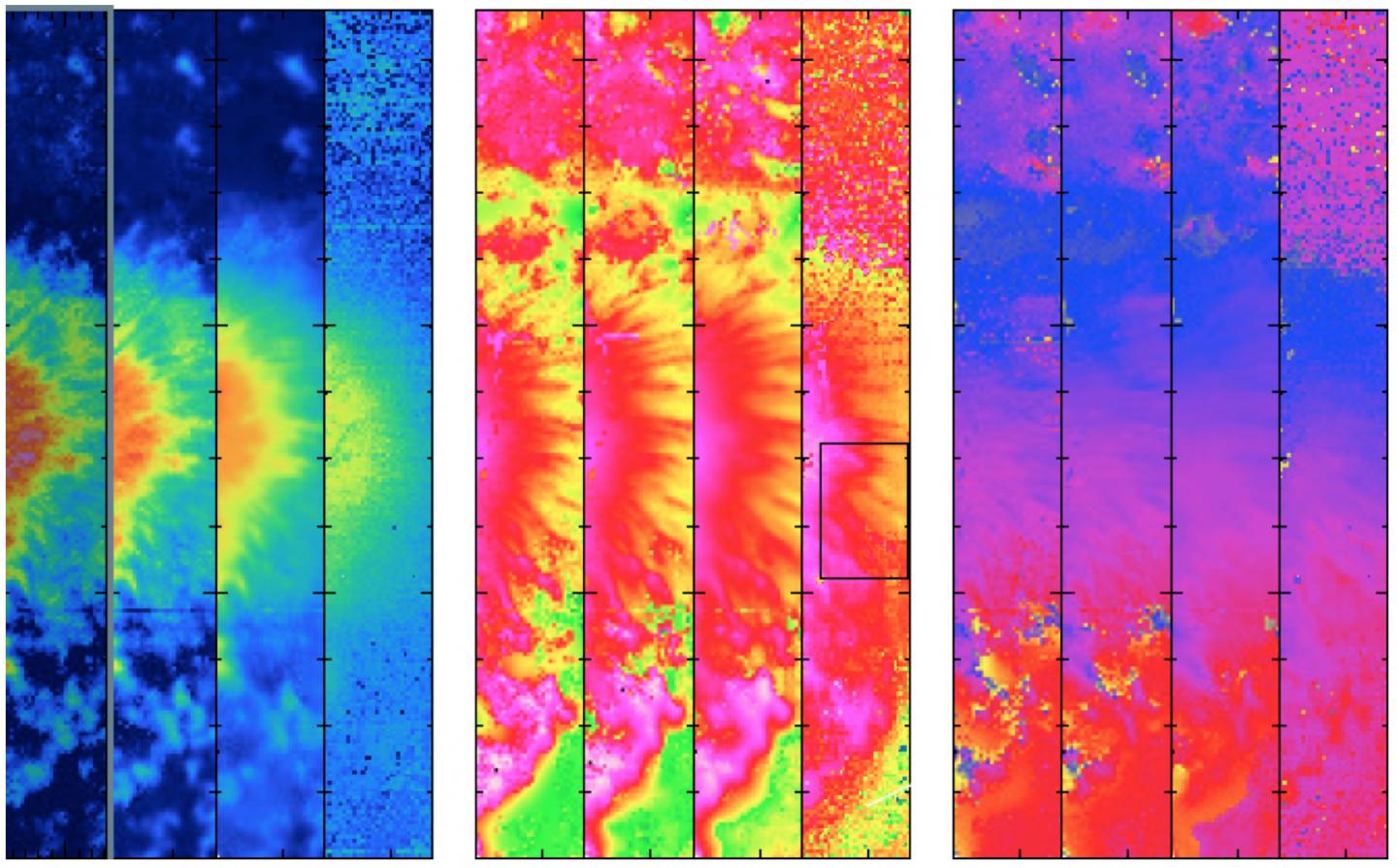
Credit: Figure from Joshi et al. (2016, A&A, 596, A8)
This special issue of Astronomy & Astrophysics contains a series of scientific articles, which are based on data obtained with the GREGOR solar telescope in 2014 and 2015. This period represents the initial phase of scientific use, and was carried out jointly by all partners of the GREGOR consortium. These articles demonstrate the potential of the telescope and its instruments at this early stage of development.
GREGOR is Europe's largest solar telescope and is a part of the Teide Observatory on Tenerife, on the Canary Islands, Spain. It observes the Sun at visible and near-infrared wavelengths to collect data from the photosphere and the overlying chromosphere. GREGOR measures magnetic field and material motion with high precision and with a spatial resolution of some 50 km on the solar surface.
The development of GREGOR started around the turn of the millennium and marked an important paradigm change. Since the 1970s, large solar telescopes were constructed as evacuated systems in order to eliminate internal seeing and to improve the imaging quality. With an aperture of 1.5 meters, an evacuated telescope with an entrance window was no longer an option, so GREGOR is an open telescope with active cooling of the primary mirror. A retractable dome allows flushing of the telescope with ambient air. Thanks to its mature adaptive optics and a suite of spectroscopic, polarimetric, and imaging instruments, it is now one of world's most powerful solar telescopes.
GREGOR was formally inaugurated in 2012, and since then, the commissioning and science verification of the telescope and its instruments has been completed. A few remaining major elements, such as the image derotator and a slit scanning system, have been added to the system in the meantime. GREGOR received a lot of attention from the European solar community during the first two access campaigns supported by the SOLARNET solar physics network in 2015 and 2016.
The publications in this issue cover a range of topics, including magnetic reconnection in a flare, sunspot magnetic fields in the photosphere and chromosphere, material flows in active regions, and weak magnetism of the very quiet Sun. Imaging data provide details of the solar photosphere at a scale of 60 km on the Sun (0.08 arcsec angular resolution). For the first time, GREGOR has resolved details smaller than 100 km in sunspot light bridges, which has advanced our understanding of magneto-convection. The excellent polarimetric sensitivity enables the measurement of magnetic field strengths down to a few Gauss, unraveling for the first time that even in the most quiet areas on the Sun, 80% of the area is covered with magnetic fields. The combination of high spatial resolution and high magnetic field sensitivity makes GREGOR a unique telescope.
###
A&A special issue: GREGOR first results
Astronomy & Astrophysics, volume 596, December 2016
Media Contact
Dr. Jennifer Martin
[email protected]
http://www.aanda.org
############
Story Source: Materials provided by Scienmag





